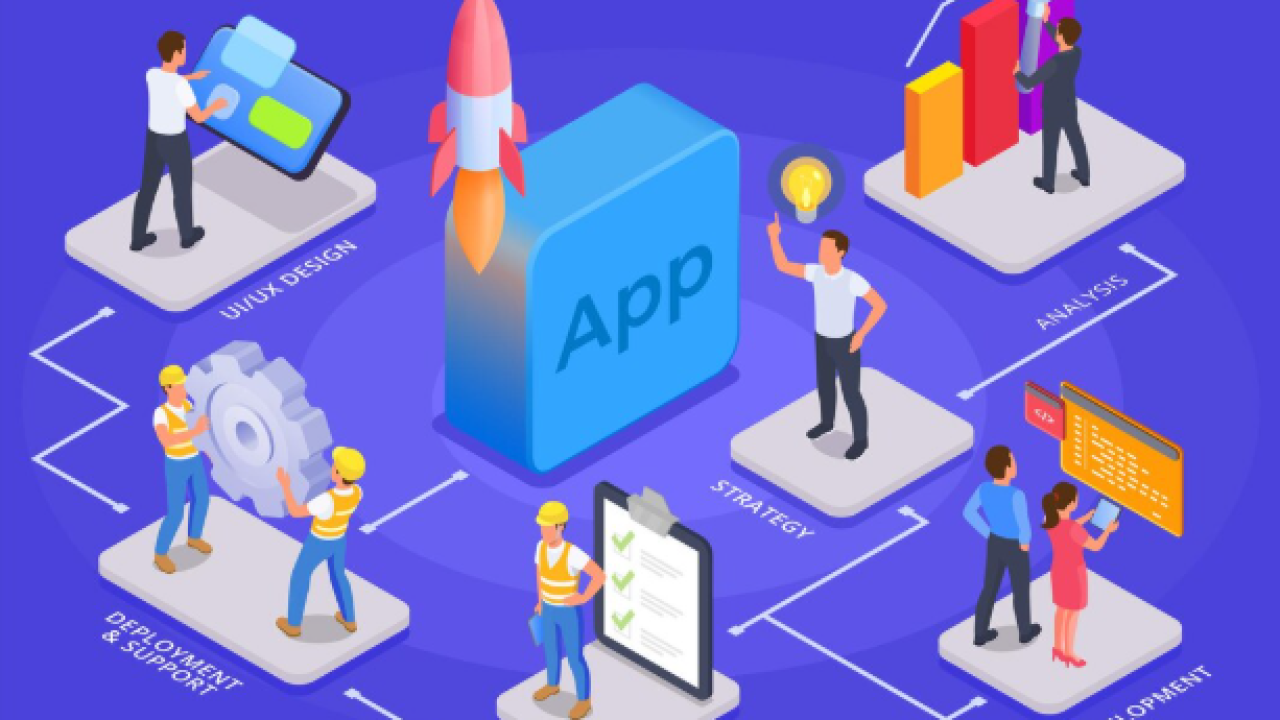The Race to Market: Why Rapid Product Validation is Your Superpower
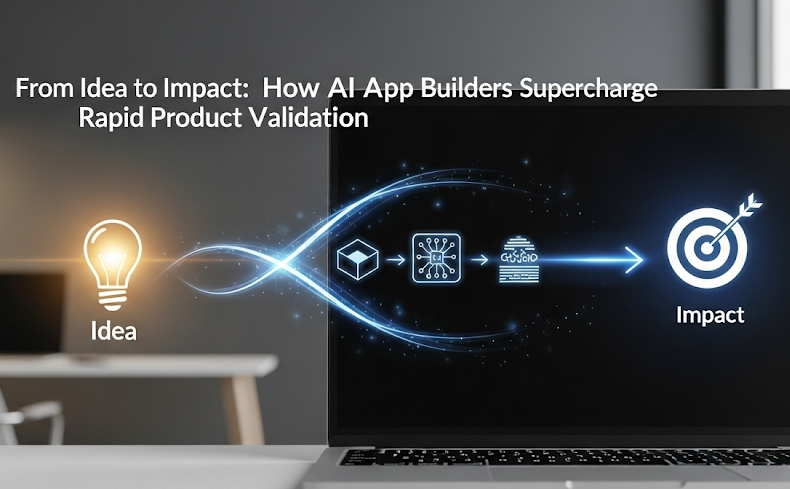
The High Stakes of Product Failure: Understanding the Risk
Product failure carries significant financial burdens. Companies invest heavily in development, marketing, and staffing, often for months or even years. When a product doesn’t resonate with the market, these investments are lost. Consider the fact that roughly 70% of new products fail to meet their revenue targets. This isn’t just about wasted money; it’s also about the opportunity cost. Resources tied up in a failing venture could have fueled successful innovations elsewhere. “The risk of launching a product without market validation is simply too high.”
Beyond monetary losses, product failure erodes more than just the balance sheet. It damages a company’s reputation and erodes customer trust. Employees, who pour energy into these projects, often see a significant drop in morale. This can increase turnover and make attracting new talent harder. For startups, a failed launch can cripple investor confidence. This makes securing future funding nearly impossible. “Understanding these profound risks underscores the critical need for effective product validation strategies.”
Launch Your App Today
Ready to launch? Skip the tech stress. Describe, Build, Launch in three simple steps.
BuildTraditional Validation: Slow, Costly, and Often Inaccurate
Traditional product validation methods often feel like navigating a maze blindfolded. You might spend weeks, or even months, conducting manual surveys, focus groups, and extensive one-on-one interviews. This process demands significant time and resources. Consider the substantial expense of hiring research teams, renting venues, and analyzing mountains of qualitative data. “Each step delays your market entry and burns through valuable budget.” This slow, labor-intensive approach becomes a significant bottleneck, especially for agile startups. It ties up capital that could fuel critical development or marketing efforts. Such delays put your project at a disadvantage before it even truly launches.
Beyond the sheer cost and time, traditional validation is also frequently inaccurate. Feedback gathered in controlled environments, like a focus group, doesn’t always reflect genuine, real-world user behavior. Participants might express interest in a feature they’d never actually use, often influenced by social desirability bias or hypothetical scenarios. Small sample sizes can lead to skewed results, failing to truly represent your broader target audience. “Relying on what people *say* they want, rather than observing what they *do*, is a risky gamble.” This can result in developing features nobody truly needs or, worse, missing crucial user pain points entirely. Ultimately, it significantly raises the risk of building the wrong product, despite heavy investment in its ‘validation’ phase.
Embracing Agility: The Modern Imperative for Innovation
The business world is changing at a breathtaking pace. New technologies emerge constantly. Consumer demands evolve almost overnight. In this dynamic environment, innovation is a continuous journey. It is not a single, fixed destination. Companies can no longer afford rigid, multi-year product development plans. “Adopting an agile mindset is now a fundamental requirement for staying competitive and relevant.” It means being flexible, adaptable, and ready to pivot quickly. This approach allows businesses to swiftly respond to market signals. It also enables them to embrace new opportunities with speed.
This commitment to agility fuels modern innovation. It emphasizes iterative development and constant learning. Consider successful tech giants who rapidly deploy updates. They test concepts with real users. This often happens through Minimum Viable Products (MVPs). Then, they refine based on direct feedback. “This continuous feedback loop minimizes risk and wasted resources significantly.” It ensures efforts are always aligned with actual user needs. Such responsiveness accelerates rapid product validation. It transforms market uncertainty into a powerful competitive advantage. This is precisely where modern tools like AI app builders provide a significant edge.
Introducing the Game Changer: AI App Builders
Forget the slow, complex traditional development cycles. “Today, AI app builders are fundamentally reshaping how we transform ideas into tangible products.” These innovative platforms leverage artificial intelligence. They automate significant portions of application development. This offers a powerful shortcut for creators. Even non-technical users can now design, build, and deploy functional prototypes. This happens with unprecedented speed, cutting initial effort and cost.
This acceleration makes AI app builders a true game-changer for rapid product validation. You no longer spend months building a minimum viable product (MVP). Instead, you can generate a working model in days or weeks. “This allows businesses to put their ideas in front of real users much sooner, gathering crucial feedback without a massive upfront investment.” This ensures products truly meet market needs. Teams can iterate quickly and pivot effectively. This significantly reduces time to market and minimizes risk.
Unpacking the Power: What Exactly Are AI App Builders?
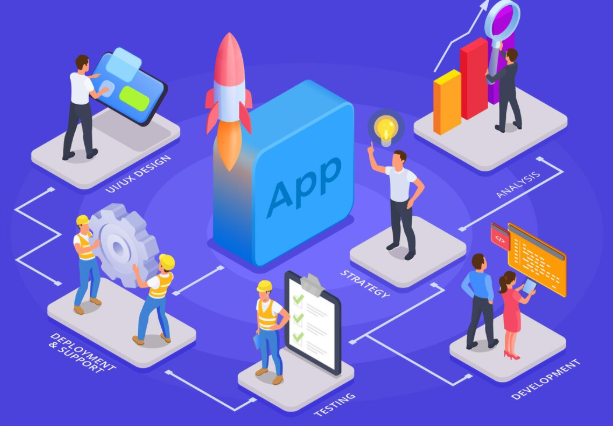
Defining AI-Powered Development: From Idea to Interactive Prototype
AI-powered development represents a transformative shift in software creation. It integrates artificial intelligence capabilities directly into the development process. This fundamentally changes how we move from a mere concept to a tangible application. “These intelligent AI app builders can interpret natural language prompts, design mockups, or even simple descriptions.” They then translate these inputs into executable code and functional components. This automation significantly reduces the initial heavy lifting, making the complex task of app development more intuitive and accessible for entrepreneurs and businesses alike.
The power truly unfolds as AI app builders accelerate the journey to an interactive prototype. Instead of spending weeks on manual coding, AI can generate a functional, clickable version of your app almost instantly. This rapid generation includes user interfaces, basic backend logic, and even pre-configured integrations, turning your vision into a testable reality in hours or days. “”This immediate transition to an interactive prototype is invaluable for collecting early user feedback and performing critical product validation, ensuring your app aligns perfectly with market demands before significant investment.” It dramatically shortens the path ‘From Idea to Impact’.
Key Features That Enable Speed: Visual Development, AI Assistance, Integrations
At their core, AI app builders thrive on visual development. This means you’re not writing complex code line-by-line. Instead, you’re dragging and dropping pre-built components onto a canvas. Think of it like building with digital LEGOs. This significantly lowers the barrier to entry for non-developers. “AI assistance further accelerates this process, often automating repetitive tasks.” It can suggest UI layouts, generate basic code snippets, or even help define data models based on your input. This intelligent support reduces manual effort, letting you focus on core functionality and user experience.
Another crucial feature is robust integrations. Modern applications rarely live in isolation. AI app builders provide pre-built connectors to popular databases, APIs, and third-party services. This allows your app to seamlessly interact with other systems, like payment gateways (e.g., Stripe) or customer relationship management (CRM) platforms. These out-of-the-box integrations are vital for creating a fully functional prototype quickly, avoiding complex custom coding. Together, these powerful features ensure you can build, test, and refine your ideas at unprecedented speeds.
No-Code vs. Low-Code vs. AI-Driven: Understanding the Nuances
When exploring rapid app development, you’ll find no-code and low-code platforms. No-code tools empower users with zero programming knowledge. They offer visual drag-and-drop interfaces to build functional applications fast. It’s like assembling an app from pre-made blocks. For example, a marketing team might use a no-code builder like Glide for an internal tool. In contrast, low-code platforms appeal to professional developers too. They use visual interfaces and pre-built components. “Crucially, they also allow custom code, enabling more complex integrations.” This provides unique functionalities. Low-code bridges the gap between visual development and traditional coding.
AI-driven app builders represent the next evolution. They go beyond merely dragging elements. These sophisticated tools interpret your intent using natural language prompts. “Imagine simply describing your desired app feature. The AI then designs the UI, suggests logic, and generates code snippets.” This fundamentally shifts the development paradigm from building blocks to conversational guidance. AI app builders learn from data, optimizing processes and predicting user needs. They can automate complex tasks, significantly speeding up product validation. This leads to faster iterations and more intelligent, context-aware applications.
Transforming the Development Lifecycle with Intelligent Automation
AI App Builders completely change how software is built. “They integrate intelligent automation throughout the entire development lifecycle.” This means AI handles many repetitive, time-consuming tasks. Think about initial design wireframes. AI can even generate actual code. It automates backend setup. It helps craft user interfaces (UI). It suggests optimal database structures. For example, tools like Microsoft Power Apps use AI. They translate simple descriptions into working app parts. This significantly speeds up the initial build phase. Developers can then focus on complex logic and innovation.
This approach moves projects from idea to prototype much faster. Organizations achieve rapid product validation quickly. They deploy functional apps for user feedback. “The benefits go beyond just speed.” This makes app creation far more accessible for innovators and non-technical teams. AI automates extensive coding tasks. This democratizes app creation. It empowers more people to bring their ideas to life. This accelerates innovation across many industries. Concepts become tangible, testable products with unprecedented efficiency.
The Validation Revolution: How AI App Builders Accelerate Your Insights
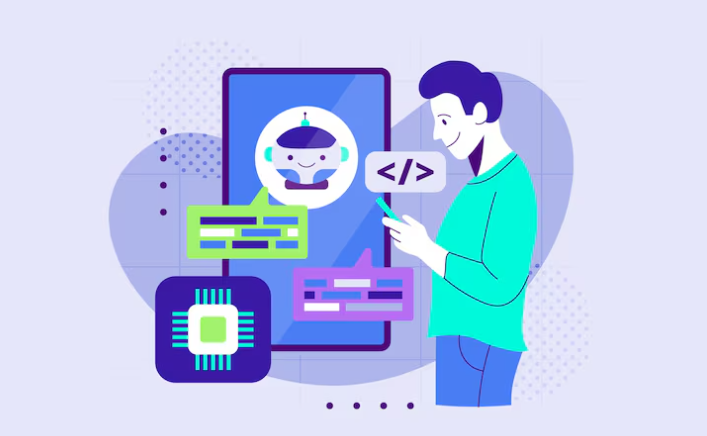
From Concept to Clickable Prototype in Hours, Not Weeks
Gone are the days when bringing a software concept to life meant weeks, or even months, of painstaking design and development. Traditionally, translating an idea into a clickable prototype required extensive wireframing, mockups, and front-end coding. This lengthy process often delayed crucial feedback from potential users. “AI app builders have completely redefined this timeline, collapsing the initial design phase dramatically.” They allow innovators to bypass the traditional bottlenecks, accelerating from a mere thought to a tangible digital experience with unprecedented speed. This efficiency is a game-changer for rapid product validation.
How do they achieve such speed? AI app builders leverage advanced algorithms and natural language processing. You can describe your app’s core functions or user flows in simple English. The AI then intelligently generates interfaces, components, and even basic logic automatically. “This capability means you can have a functional, interactive prototype ready for testing in just a few hours.” Imagine presenting a working model of your idea to stakeholders or early users on the very same day you conceived it. This rapid iteration cycle fuels instant user feedback, allowing for immediate adjustments and significantly de-risking your product development journey.
Automating User Feedback Collection and Analysis
Collecting user feedback often feels like a manual chore. AI app builders simplify this process significantly. They integrate intelligent feedback mechanisms directly into your prototypes or MVPs. This allows for effortless, real-time collection of user opinions. Imagine a quick in-app survey popping up after a key action, or AI automatically capturing user sentiment from open-ended comments. AI can also use sentiment analysis to understand user mood. “These tools ensure you gather constant, authentic insights without interrupting the user’s experience.”
Once collected, the power of AI shines in automated analysis. AI algorithms swiftly process large volumes of feedback data. They pinpoint common pain points, identify recurring feature requests, and track overall user sentiment. This rapid analysis helps you understand user needs faster. Natural Language Processing (NLP), for example, can categorize and summarize vast amounts of open-ended text feedback. “You gain actionable insights in minutes, not weeks, enabling truly agile product development.”
A/B Testing and Iteration Made Effortless
AI app builders make A/B testing incredibly straightforward for every developer. You can easily create and deploy multiple versions of features or layouts. Testing two different call-to-action button texts or onboarding sequences now takes just a few clicks. “This enables instant deployment of live experiments to a segmented user base, gathering real-time performance data efficiently.” It eliminates manual setup, drastically cutting development cycles and accelerating your path to market.
The true magic unfolds in effortless iteration. These intelligent platforms don’t just run tests; they also analyze results using advanced algorithms. AI identifies clear winners and losers. It provides actionable insights into user preferences and pain points. “This continuous feedback loop empowers data-driven decisions, allowing you to rapidly refine your product based on actual user behavior and market feedback.” You can then instantly update your app with the most effective designs, ensuring constant improvement and user satisfaction without heavy development burden.
Predictive Insights: Understanding User Behavior Before They Click
AI app builders provide a significant competitive advantage. They leverage powerful predictive analytics. This helps them deeply understand future user behavior. These tools analyze vast historical datasets. This includes past user interactions, market trends, and even competitor landscapes. “This yields incredible predictive insights, showing user preferences and potential actions long before they click a single button.” You gain clear foresight into their journey.
“This proactive foresight is vital for rapid product validation and efficient development.” It enables teams to make smarter, data-driven design choices. You can refine features proactively. This significantly reduces the risk of building unwanted functionalities. It saves considerable time and development costs. For instance, AI might suggest the best placement for a crucial call-to-action button. It could also identify and fix user friction points within your app’s flow, ensuring a seamless experience.
From Idea to Impact: Real-World Rapid Validation with AI

Case Study 1: Launching an MVP with Minimal Resources
Imagine ‘ConnectLocal,’ a lean startup with an innovative idea for a hyper-local event discovery app. Their primary challenge? Minimal resources – a tight budget and no in-house development team. Instead of traditional, costly development, they turned to an AI app builder. This platform empowered their non-technical founder to design, prototype, and implement core features with remarkable agility. The AI-powered tools handled much of the complex coding and infrastructure setup automatically. “This allowed ConnectLocal to launch a functional Minimum Viable Product (MVP) in under four weeks, bypassing months of traditional development,” a critical advantage for their constrained timeline.
This rapid development cycle proved invaluable for their product validation strategy. ConnectLocal immediately deployed their MVP to a small, targeted community, collecting authentic user feedback on design, essential features, and overall market fit. The insights gained were immediate and actionable, enabling data-driven adjustments without major financial commitments. “By leveraging AI, they confirmed market demand and refined their concept with real user data, all while keeping initial investment exceptionally low,” demonstrating the power of rapid product validation from concept to tangible impact.
Case Study 2: Pivoting Quickly Based on Real-Time Data
Imagine a startup launching a new productivity tool. Initial user feedback often reveals a crucial flaw: a core feature isn’t resonating as expected. Traditionally, re-evaluation and redesign took significant time and expense. This lengthy process drained resources and investor patience. “Modern AI app builders fundamentally transform this challenge.” They empower teams to deploy minimum viable products (MVPs) in days, not months. This allows immediate data collection on user behavior and preferences.
Consider ‘TaskFlow AI’, a hypothetical task management app. Early adoption showed low engagement with its ‘predictive scheduling’ feature. Traditional cycles would delay identifying this problem, leading to wasted effort. However, an AI-powered app builder let TaskFlow AI quickly gather real-time data. They instantly saw feature usage and drop-off rates. Analytics revealed users preferred a simpler, manual scheduling option. Within days, TaskFlow AI leveraged their AI app builder to modify the feature set, introducing a simplified interface. “This rapid pivoting, driven by instant data insights, saved the company valuable time and capital, aligning their product with true market needs.” It showcased the agility only modern development tools can provide.
Industry-Specific Examples: E-commerce, Healthcare, Education
AI app builders are revolutionizing how industries approach rapid product validation. In e-commerce, businesses can swiftly prototype innovative features. Imagine a new AI-driven personalized recommendation engine or a virtual try-on tool. They gather crucial user engagement data and conversion rates in weeks, not months. This allows for immediate, concrete feedback, helping avoid massive upfront investment in unvalidated ideas. “This agility ensures resources are focused on features customers truly desire.”
The impact extends to healthcare, where the need for speed meets strict compliance. Developers can quickly build and test a new telemedicine app feature. Examples include an AI-powered symptom checker or a secure patient communication portal. This rapid prototyping validates critical functionalities and user acceptance. It also ensures early adherence to regulations. Crucial feedback from medical professionals and patients is integrated sooner. This accelerates the deployment of safer, more effective health solutions.
In education, AI app builders empower EdTech companies to experiment efficiently. They can prototype interactive learning modules or personalized tutoring interfaces. Imagine validating a gamified lesson on complex subjects or an adaptive quiz system. User feedback helps assess student engagement and learning outcomes rapidly. “This ensures educational tools are highly relevant and effective from day one.” Across all these sectors, AI-powered app development dramatically shrinks the product validation cycle. This approach significantly reduces the risk of building unwanted features or entire applications. It allows companies to pivot strategies or scale successful ideas much faster. Rapid product validation becomes a key competitive advantage, delivering value more efficiently to users everywhere.
Tips for Crafting Effective Validation Experiments
To craft truly effective validation experiments, your first step is clarity. “Clearly define your hypothesis and the specific problem your AI-powered solution aims to solve.” Pinpoint your target audience with precision; understanding their needs is paramount. What assumptions are you testing? What specific questions do you want answers to? Ensure each experiment has measurable outcomes. For instance, are you validating user interest or feature usability? Using AI app builders allows you to quickly generate testable prototypes that align perfectly with these focused objectives, ensuring your validation efforts are targeted and efficient.
Next, design minimal viable experiments (MVEs) that isolate key assumptions. This might be a simple landing page, a clickable prototype, or an interactive mock-up rapidly generated by an AI app builder. The goal is to gather crucial data with the least effort. Collect both qualitative feedback through interviews and quantitative data like user engagement rates or conversion metrics. “Set clear success metrics before launching to objectively assess results.” This iterative process, accelerated by AI’s prototyping speed, enables you to pivot or persist with confidence, turning insights into tangible product improvements swiftly for successful rapid product validation.
Mastering the Art: Best Practices for AI-Driven Product Validation
Choosing the Right AI App Builder for Your Needs
The first step is to clearly define your project’s scope. What kind of application do you need to build? What core features are absolutely essential for your initial validation? Also, consider your team’s technical comfort level. Some AI app builders specialize in intuitive no-code interfaces, making them perfect for business users or rapid prototyping without a developer. Other platforms offer low-code environments, providing more flexibility for those with some coding knowledge, while advanced code-generating AIs cater to complex, custom solutions. Matching the builder to your project’s specific needs and your team’s capabilities ensures a smoother, faster validation process.
Next, thoroughly evaluate platforms based on crucial features. Prioritize ease of use, the depth of customization options, and critical integration capabilities with your existing tech stack, such as CRM or analytics tools. Do not overlook robust security features and the platform’s ability to scale with potential user growth, even in early stages. Investigate the quality of community support and available documentation. Many leading platforms, like Bubble, Adalo for consumer apps, or Internal.io for business tools, offer free trials or demos. “Selecting the appropriate AI app builder significantly impacts your validation speed and overall product quality. A thoughtful choice here can drastically accelerate your path from idea to market impact.”
Defining Clear Validation Metrics and KPIs
Before you even build with AI app builders, clearly define what success means for your product. This begins by identifying specific validation metrics and Key Performance Indicators (KPIs). “What problem are you solving for users?” You need to know precisely what you are measuring. Think about user sign-ups, feature adoption rates, or task completion percentages. For a new AI-powered educational app, a core KPI might be student engagement with lessons. Another could be improved test scores. These tangible indicators guide your AI-driven product validation. They confirm if your solution truly meets a market need. Without clear goals, your efforts lack direction.
Choosing the right metrics is crucial for effective AI-driven product validation. AI app builders empower you to track these metrics efficiently from day one. Many platforms offer built-in analytics dashboards. This allows for rapid iteration based on real-time data. “Focus on metrics that directly reflect user value and business goals.” For example, a low conversion rate on an AI feature might signal a poor user experience. Conversely, high engagement suggests strong product-market fit. Establishing these targets early ensures your validation process is focused. It provides measurable goals for every iteration and improvement.
Balancing AI Automation with Human Intuition
AI app builders excel at rapidly analyzing vast datasets. These include user feedback, market trends, and usage patterns. This AI automation provides a robust, data-backed foundation for early product validation. It identifies patterns and potential issues with incredible speed. “However, while AI efficiently pinpoints *what* is happening, it often struggles with the nuanced *why* behind human behavior, emotional responses, or cultural context.” Purely algorithmic reliance risks overlooking critical, non-quantifiable insights essential for true innovation.
This is precisely where human intuition becomes indispensable. Human teams bring empathy, creativity, and strategic foresight to the validation process. They interpret ambiguous feedback and identify cultural sensitivities. They also understand unarticulated user needs that AI might overlook. “Blending AI automation with human judgment creates a powerful synergy, leading to truly innovative and user-centric products that resonate deeply with real users.” This integrated approach ensures comprehensive and effective product development, moving beyond mere data points to genuine user connection.
Addressing Data Privacy and Ethical Considerations
Leveraging AI app builders for rapid product validation demands paramount attention to data privacy. Developers must strictly adhere to regulations such as GDPR and CCPA from the outset. This requires robust data anonymization or pseudonymization techniques. Apply these to all user data collected during testing. “Prioritizing robust data encryption is non-negotiable to safeguard sensitive information.” Transparent data policies and obtaining explicit user consent are also critical steps. Failing to protect user data damages trust and causes legal penalties. This undermines the entire validation effort.
Beyond privacy, ethical considerations are equally vital. AI models used in validation can inadvertently perpetuate or amplify existing societal biases if not carefully managed. It’s crucial to ensure the training data is diverse and representative to promote fairness and inclusivity in your app’s functionality. For example, testing an AI-powered hiring tool requires vigilance to prevent discriminatory outcomes based on demographics. “Ethical AI ensures your validated product genuinely serves *all* users fairly and responsibly.” Regularly auditing algorithms for bias and promoting accountability in development are key practices.
The Horizon of Innovation: What’s Next for AI in Product Validation
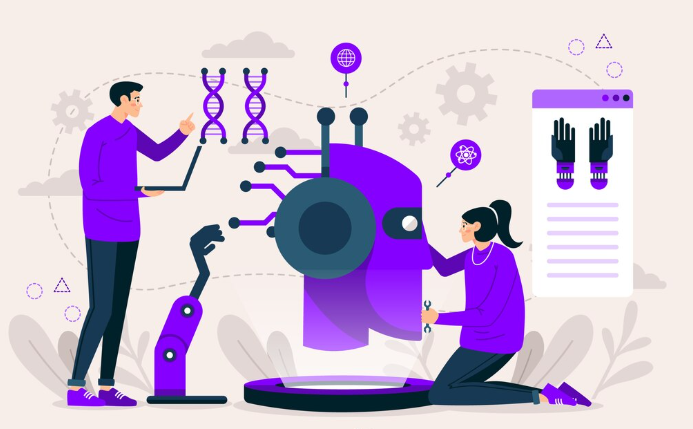
Hyper-Personalized Validation: AI’s Evolving Role
AI is rapidly moving beyond broad demographic segmentation in product validation. Soon, we will see hyper-personalized validation. Here, AI analyzes individual user behavior patterns, preferences, and even emotional responses. This deep insight allows AI app builders to tailor testing experiences. It ensures feedback is highly relevant to specific user needs, not just generalized group opinions. “Imagine AI models predicting individual user responses to new features with uncanny accuracy, based on historical interactions.” This will make product development exceptionally precise.
The next wave integrates real-time behavioral analytics with advanced generative AI, like large language models. This powerful combination enables dynamic, adaptive product testing at scale. An app feature might be presented differently to various users. This optimizes the experience for their unique interaction styles and learning preferences. For instance, AI could pinpoint a user’s exact pain points from early engagement. Then it presents targeted design variations for direct feedback. “This level of hyper-personalized feedback minimizes development waste, accelerates market fit, and builds stronger customer loyalty.” We move closer to truly user-centric design, where every individual feels heard.
Integrating Advanced Analytics and Machine Learning
AI app builders are rapidly evolving. They now embed more sophisticated advanced analytics into the validation process. This goes beyond simple usage metrics. Teams can leverage predictive modeling to forecast user retention or identify potential churn risks proactively. Imagine understanding which features will truly resonate with your target audience *before* extensive development. “This deep integration ensures product validation isn’t just reactive; it’s proactively guided by powerful, data-driven foresight.”
“Machine learning algorithms are becoming integral, driving more intelligent A/B testing optimization and highly personalized user experiences.” They analyze vast datasets. This uncovers subtle user behavior patterns that human analysts might easily miss. AI app builders can then suggest optimal feature sets, refine UI/UX elements, and even predict market acceptance with greater accuracy. This empowers product teams to iterate faster, minimize development waste, and launch solutions that precisely meet user needs. It truly transforms the landscape of rapid product validation.
The Shifting Role of Product Managers and Designers
AI app builders are rapidly redefining the day-to-day for both product managers and product designers. These intelligent tools now automate many foundational and repetitive tasks. For example, they can generate initial UI components or compile first-pass competitive analyses swiftly. “This liberation from mundane execution empowers professionals to reclaim significant time and mental bandwidth.” They can now redirect their energy towards understanding deeper user pain points and identifying true market opportunities. Their focus shifts dramatically from manual creation to strategic intent and critical analysis.
This evolving landscape sharpens the need for distinctly human aptitudes. Product managers transition into visionary orchestrators, deeply understanding market dynamics and user psychology. Their expertise shifts to identifying unmet needs and crafting compelling product narratives, guiding the AI. Similarly, product designers become the architects of profound user experiences. They leverage AI for rapid prototyping while ensuring deep empathy, accessibility, and emotional resonance. “Success now hinges on their ability to ask the right questions, interpret complex data insights, and provide ethical oversight, not just on execution.” They lead with vision; the AI executes with speed.
Embracing Continuous Validation as a Core Business Strategy
Continuous validation transforms product development from a linear process into a dynamic, ongoing loop. No longer is product validation a single, pre-launch gate. Instead, it involves persistently gathering user feedback and refining offerings *throughout* the entire product lifecycle. AI App Builders are key enablers here. They empower teams to quickly build, test, and iterate on ideas with unprecedented speed. This constant feedback ensures products remain relevant and valuable in rapidly changing markets. It helps businesses adapt faster than ever before.
Embedding continuous validation as a core business strategy fosters true agility. It means every feature update and new idea undergoes real-time scrutiny. AI-powered analytics provide granular insights from user behavior, flagging areas for improvement swiftly. “This proactive approach minimizes the risk of costly missteps and maximizes market resonance.” Successful tech giants, for instance, constantly A/B test and roll out iterative improvements based on live user data. By making validation perpetual, companies can build more robust, user-centric products. They secure a crucial competitive advantage and higher customer satisfaction.
Launch Your App Today
Ready to launch? Skip the tech stress. Describe, Build, Launch in three simple steps.
Build
